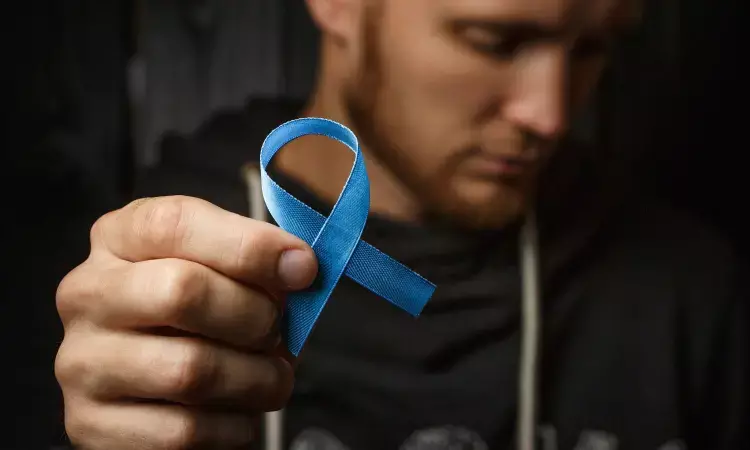- Home
- Medical news & Guidelines
- Anesthesiology
- Cardiology and CTVS
- Critical Care
- Dentistry
- Dermatology
- Diabetes and Endocrinology
- ENT
- Gastroenterology
- Medicine
- Nephrology
- Neurology
- Obstretics-Gynaecology
- Oncology
- Ophthalmology
- Orthopaedics
- Pediatrics-Neonatology
- Psychiatry
- Pulmonology
- Radiology
- Surgery
- Urology
- Laboratory Medicine
- Diet
- Nursing
- Paramedical
- Physiotherapy
- Health news
- Fact Check
- Bone Health Fact Check
- Brain Health Fact Check
- Cancer Related Fact Check
- Child Care Fact Check
- Dental and oral health fact check
- Diabetes and metabolic health fact check
- Diet and Nutrition Fact Check
- Eye and ENT Care Fact Check
- Fitness fact check
- Gut health fact check
- Heart health fact check
- Kidney health fact check
- Medical education fact check
- Men's health fact check
- Respiratory fact check
- Skin and hair care fact check
- Vaccine and Immunization fact check
- Women's health fact check
- AYUSH
- State News
- Andaman and Nicobar Islands
- Andhra Pradesh
- Arunachal Pradesh
- Assam
- Bihar
- Chandigarh
- Chattisgarh
- Dadra and Nagar Haveli
- Daman and Diu
- Delhi
- Goa
- Gujarat
- Haryana
- Himachal Pradesh
- Jammu & Kashmir
- Jharkhand
- Karnataka
- Kerala
- Ladakh
- Lakshadweep
- Madhya Pradesh
- Maharashtra
- Manipur
- Meghalaya
- Mizoram
- Nagaland
- Odisha
- Puducherry
- Punjab
- Rajasthan
- Sikkim
- Tamil Nadu
- Telangana
- Tripura
- Uttar Pradesh
- Uttrakhand
- West Bengal
- Medical Education
- Industry
Integrated pathway to detect prostate cancer early obviate need for biopsy

A research article published in EUROPEAN UROLOGY ONCOLOGY validated a pathway that finds MRI biomarkers and microRNAs as triage tests for the early detection of prostate cancer. In this study, a team of researchers found that the pathway provides the best net benefit. The pathway bypasses unnecessary biopsy at the avoidance rate of 20% at a low disease probability. It may facilitate allocating patients accurately for biopsy and risk stratification.
One of the most commonly diagnosed cancers in men is Prostate cancer (PCa). There is an urgent need to integrate noninvasive imaging and circulating microRNAs beyond prostate-specific antigens for screening and detecting PCa early.
Considering this background, researchers in a prospective single-centre cohort study validated magnetic resonance imaging (MRI) biomarkers and circulating microRNAs as triage tests for patients directed to prostate biopsy. They tested different diagnostic pathways to compare their performance on patients’ outcomes regarding unnecessary biopsy avoidance. They included patients suspicious of PCa and underwent MRI, MRI-directed fusion biopsy (MRDB), and circulating microRNAs. They used a network-based analysis for identifying MRI biomarkers and microRNA drivers of clinically significant PCa.
The study Results are:
- Researchers enrolled 261 patients.
- These underwent MRDB for detecting prostate cancer.
- A total of 178 patients represented the entire cohort.
- Fifty-five patients constituting 30.9 %, were PCa negative, 39 constituting 21.9%, had grade group (GG) 1 PCa, and 84 constituting 47.2%, had GG >1 PCa.
- The proposed integrated pathway provided the best net benefit, including clinical data, MRI biomarkers, and microRNAs.
- The biopsy avoidance rate was 20% at a low disease probability.
They said, “The main limitation is the monocentric design in a referral centre.”
They said the integrated pathway represents a validated model that sees MRI biomarkers and microRNAs as a prebiopsy triage of patients at risk for clinically significant PCa.
The most significant benefit of the proposed pathway was unnecessary biopsy avoidance.
The pathway allows accurate patient allocation to biopsy and stratification into risk group categories. This will reduce overdiagnosis and overtreatment of clinically insignificant Prostate cancer.
Further reading:
https://euoncology.europeanurology.com/article/S2588-9311(23)00108-6/fulltext
BDS, MDS in Periodontics and Implantology
Dr. Aditi Yadav is a BDS, MDS in Periodontics and Implantology. She has a clinical experience of 5 years as a laser dental surgeon. She also has a Diploma in clinical research and pharmacovigilance and is a Certified data scientist. She is currently working as a content developer in e-health services. Dr. Yadav has a keen interest in Medical Journalism and is actively involved in Medical Research writing.
Dr Kamal Kant Kohli-MBBS, DTCD- a chest specialist with more than 30 years of practice and a flair for writing clinical articles, Dr Kamal Kant Kohli joined Medical Dialogues as a Chief Editor of Medical News. Besides writing articles, as an editor, he proofreads and verifies all the medical content published on Medical Dialogues including those coming from journals, studies,medical conferences,guidelines etc. Email: drkohli@medicaldialogues.in. Contact no. 011-43720751


